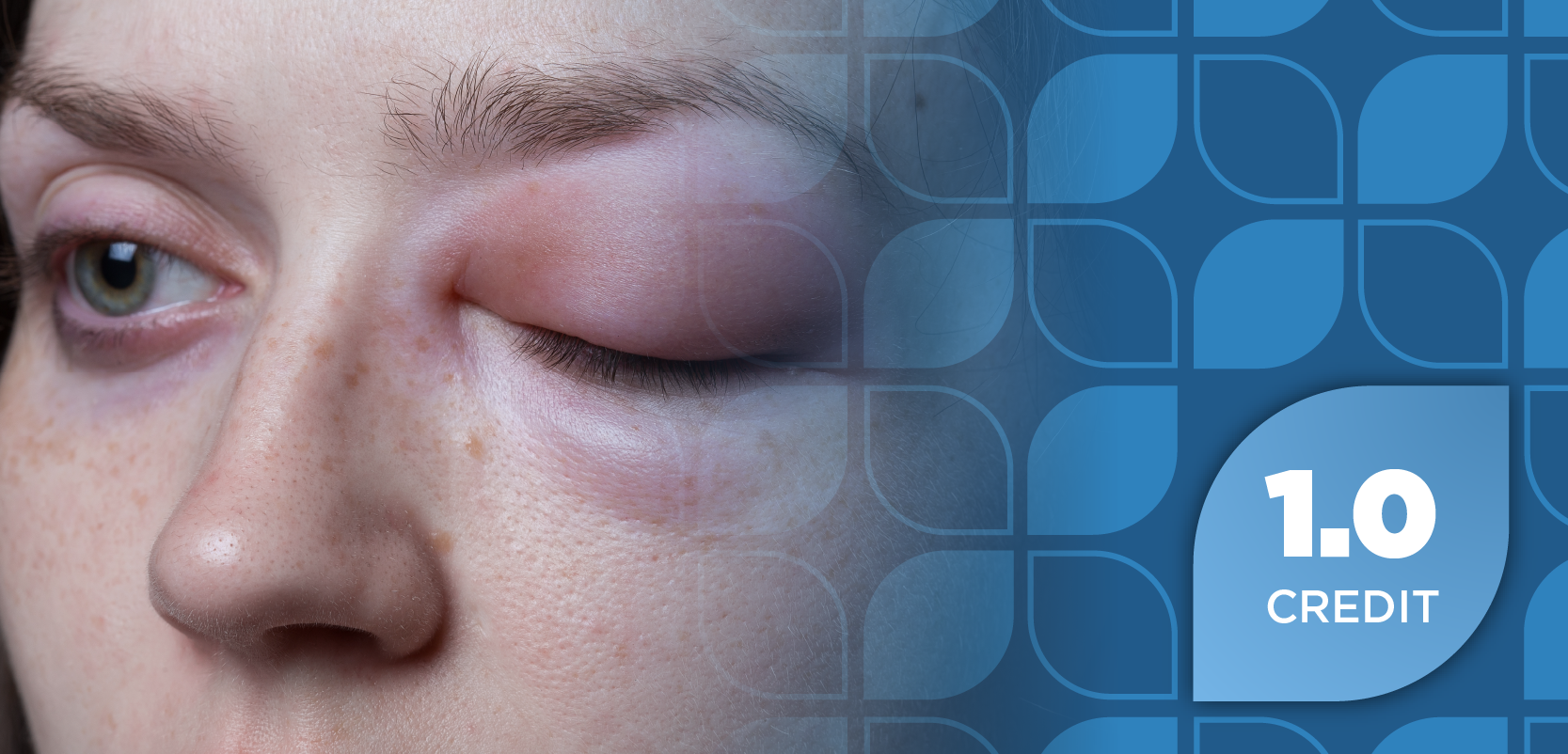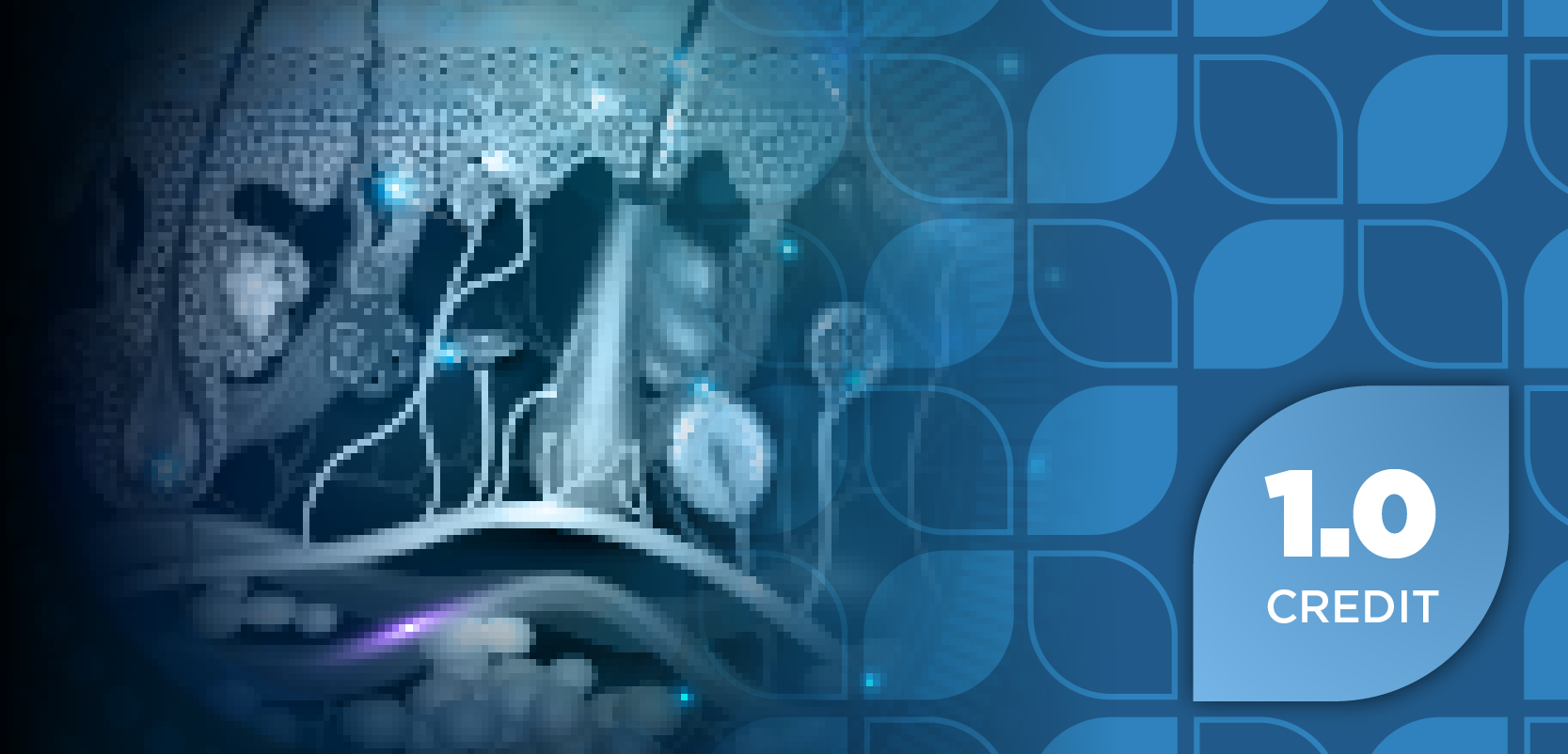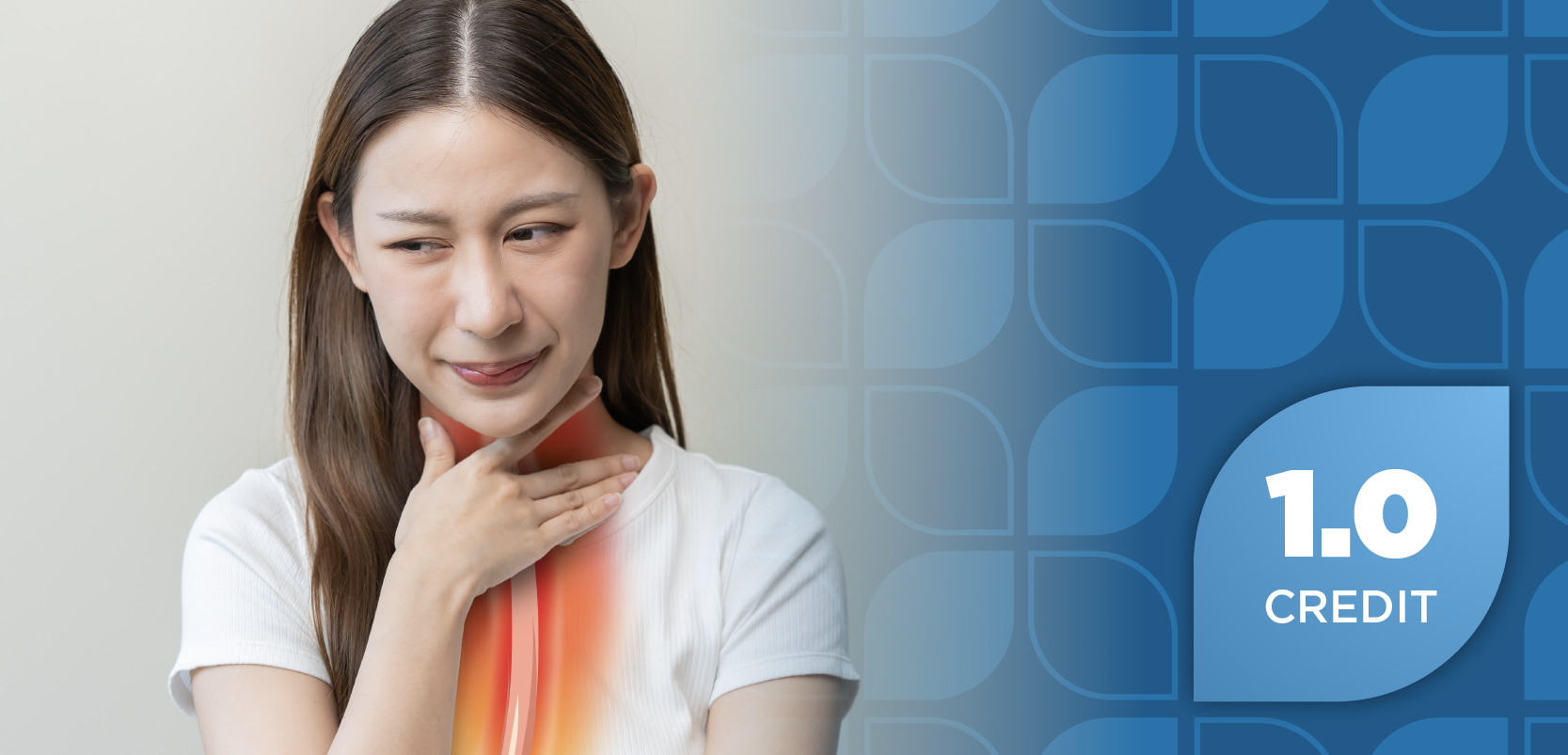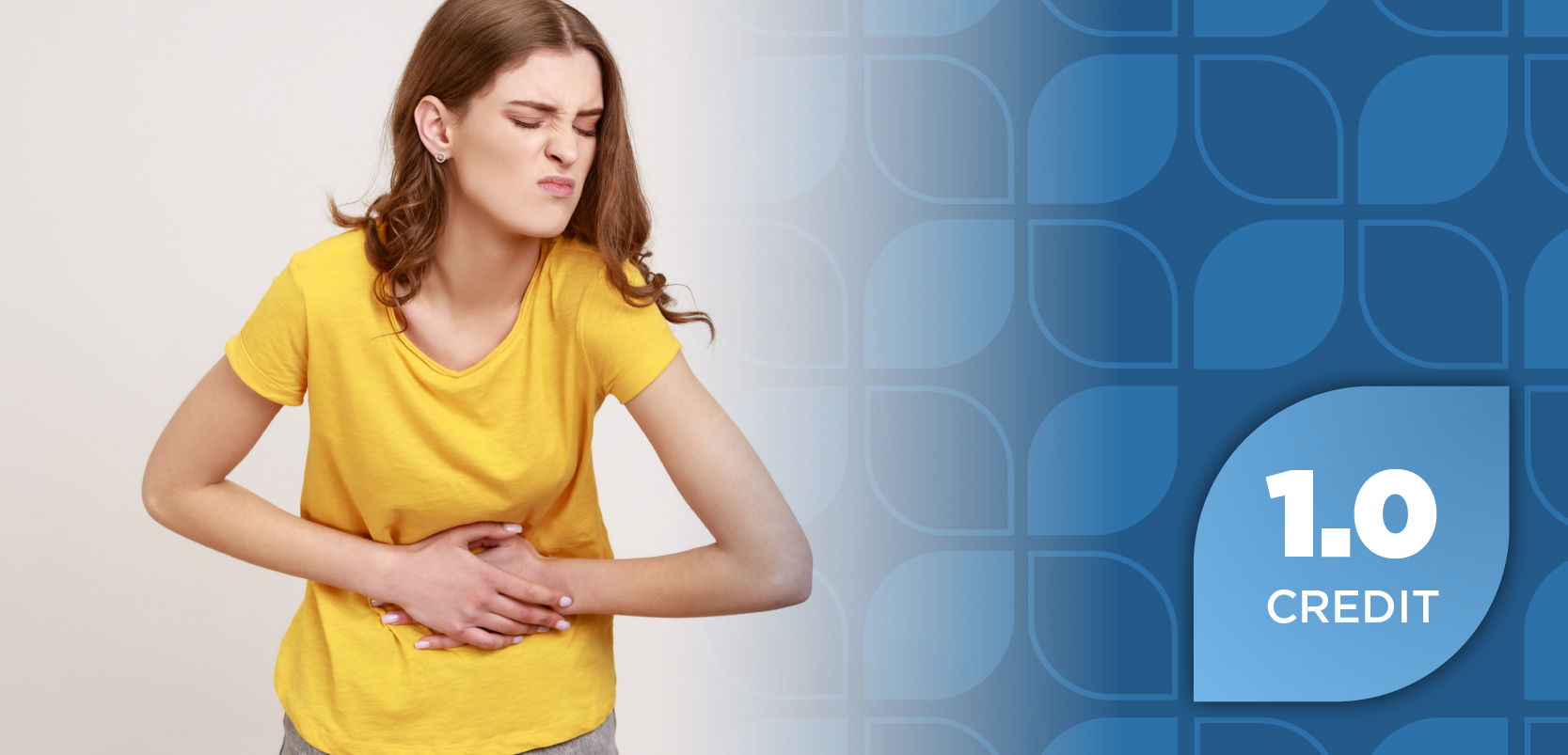Report: Impact of Inflammatory Bowel Disease
Abstract
Inflammatory bowel disease (IBD) includes ulcer-ative colitis (UC) and Crohn’s disease (CD), 2 conditions characterized by chronic inflammation. Approximately 1.17 million people in the United States are affected by these 2 conditions. It is theorized that a genetic susceptibility coupled with environmental factors, such as smoking, antibiotics, oral contraceptives, appendectomy, or diet, may influence the development of IBD. Patients with UC and CD may exhibit similar symptoms, and the conditions are often misclassified, as there is a lack of standard criteria for diagnosing IBD. Therefore, it is important for clinicians to rule out any diarrhea-related conditions for an accurate diagnosis. UC and CD typically manifest in early adulthood, and the chronic nature of these conditions greatly impacts a patient’s perception, body image, and quality of life. The inability to participate in social activities due to UC and CD impacts not only patients, but also those with whom they have close relationships.
Am J Manag Care. 2016;22:S32-S38
Impact of Inflammatory Bowel Disease (Ulcerative Colitis and Crohn’s Disease)
Inflammatory bowel disease (IBD) is characterized by chronic or recurring immune response in which the body mistakes food, bacteria, and other materials as foreign substances and attacks intestinal cells resulting in inflam-mation.1 The 2 most common IBD conditions are ulcer-ative colitis (UC), in which inflammation affects only the large intestine, and Crohn’s disease (CD), in which the entire gastrointestinal (GI) tract is affected.1
Demographics
Based on a 2013 analysis, it is estimated that approxiC -mately 1.17 million people in the United States have IBD.2 Since World War II, these numbers have changed slightly, and studies have shown that the incidence of IBD rose between 1940 and 1970, and then remained stable until 1990.3,4 However, since 1991, the incidence has risen approximately 7% for UC and approximately 31% for CD.5
The overall prevalence of UC is estimated to be 263 per 100,000 US adults with an estimated 593,000 Americans afflicted with the condition.2 The prevalence of UC increases with age, and while some studies report no gender differences evident in either children or adults, others show slightly higher prevalence rates in males.2,6
It has been observed that UC typically manifests in patients between the ages of 30 and 40 years, with higher incidence rates reported in women between the ages of 30 and 60 and in women who resided in northern latitudes.2,7,8
With an estimated 241 per 100,000 adults, or an estimated 565,000 Americans diagnosed with CD, the prevalence of CD in the United States is similar to that of UC.2 It has been observed that CD affects those in all age groups; how-ever, it typically manifests in the second and third decades of life (
Risk Factors
It is theorized that a genetic susceptibility coupled with any number of unknown environmental factors can trigger IBD. The condition is then sustained by an abnormal immune response, which leads to the disrup-tion of the intestinal mucosa and the underlying layers.10 The exact trigger factors for IBD are unknown; however, studies suggest that genetics, smoking, antibiotics, oral contraceptives, appendectomy, and diet may influence the development of IBD.
Genetics
It has been reported that patients with a first-degree relative with either UC or CD have a 10-fold increased risk of developing IBD compared with the general population.11 A similar increase in risk was also seen in patients with a second-degree relative affected; however, this risk was lower.11 A study examining perinatal risk factors and the development of IBD showed a significant increased risk of a child developing CD if the mother had CD (P = .011), if the mother was over 35 years (compared with younger than 35 [OR, 4.81; 95% CI, 2.32-9.98]), and if the mother smoked (compared with nonsmokers [OR, 2.04; 95% CI, 1.06-3.92]).12 No association was found between the perinatal risk fac-tors examined and the development of UC.12
Smoking
A relationship between smoking and the development of IBD has been demonstrated, and it has been reported that the risk of developing CD is 1.3 times greater in men and 5 times greater in women who are current smokers compared with people who have never smoked.13 Smoking appears to have a different effect on the development of UC. Compared with people who have never smoked, for-mer smokers have a 60% higher risk of developing UC.13 This may be due to an acute reduction in colonic mucus production following smoking cessation that may increase susceptibility to inflammation and the development of UC. Subjects who quit smoking more remotely have a similar risk of UC to those who never smoked. Additionally, the risk of UC is the same or slightly lower when comparing current smokers with people who have never smoked. Early childhood exposure to passive smoking was also asso-ciated with an increased risk of developing CD; however, this was not seen with UC.13 The differing effect of smoking in the development of UC and CD was also seen when tak-ing genetics into account. A study of 339 pairs of siblings, in which the pairs were discordant for both smoking and IBD phenotype (UC or CD), showed that smoking increased the risk for the development of CD, but appeared to have a protective effect on developing UC.14
Antibiotic Use
A strong association between antibiotic use in the first year of life and the development of pediatric IBD has been reported.15 In addition, the increased risk was more frequently observed in males than females, and CD occurred more frequently than UC. This increased risk has also been noted in adult patients. Logistic regression was used to evaluate the link between antibiotic use and the development of CD; the results showed a statistically significant association between CD and antibiotic use 2 to 5 years prior to diagnosis (OR, 1.32; 95% CI, 1.05-1.65). The greatest increases in risk were observed with tetracy-cline (OR, 1.33; 95% CI, 1.01-1.77) and metronidazole and tinidazole (OR, 1.71; 95% CI, 1.05-2.76).16
Hormones
The use of oral contraceptives appears to have an impact on the development of IBD. For women currently using oral contraceptives, the age-adjusted hazard ratio (HR) for CD is reported to be 2.88 (95% CI, 1.69-4.89) and for past users 1.50 (95% CI, 1.13-1.99) compared with women who have never used oral contraceptives.17 In addition, current and past users of oral contraceptives had a higher, though not significantly, rate of developing UC compared with women who never used oral contraceptives. The HR was 1.22 (95% CI, 0.74-2.07) for current users, and 1.18 (95% CI, 0.91-1.52) for past users.17
Appendectomy
It has been postulated that an appendectomy confers a protective effect against the development of UC. A cohort of 212,963 patients from the Swedish Inpatient Register showed that patients who underwent an appendectomy had a significantly lower incidence of UC com-pared with controls (incidence rate ratio [IRR], 0.74; 95% CI, 0.64-0.86).18 However, multivariate analysis showed that the incidence of UC was low in patients who under-went an appendectomy for inflammatory conditions (ie, appendicitis, lymphadenitis) compared with controls, but no different from controls among patients who under-went an appendectomy for nonspecific abdominal pain, which suggests that the inflammatory condition is related to the development of UC, not the appendectomy. The opposite was seen in patients with CD. The increased risk of CD and disease severity was related to the under-lying diagnosis. Patients with perforated appendicitis had a higher IRR (2.11; 95% CI, 1.21-3.79) and more aggressive disease. The incidence risk was similar for other diagno-ses but patients had less aggressive disease.19
Diet
Reif et al reported that an examination of pre-illness diets of patients with UC and CD showed a relationship between sucrose consumption and illness development.20 The researchers state that high sucrose consumption is often associated with a high consumption of processed foods and decreased consumption of fruits and vegetables, the interplay of which may contribute to the diseases. Additional studies have demonstrated a rela-tionship between fiber, dietary fat, and possibly protein with the development of IBD. The Nurses’ Health Study is a prospective cohort of 121,700 women who were followed for more than 26 years. Analysis of data from this cohort showed that long-term intake of dietary fiber was associated with a significantly lower risk of developing CD (HR, 0.59; 95% CI, 0.39-0.90); however, the same association was not seen for UC (HR, 0.82; 95% CI, 0.58-1.17).21 Results of an analysis of dietary fat intake in the same study population showed that high intake of dietary long-chain n-3 polyunsaturated fatty acids was associated with a reduced risk of UC (HR, 0.72; 95% CI, 0.51-1.01), while high intake of trans-unsaturated fats was associ-ated with an increased risk of UC (HR, 1.34; 95% CI, 0.94-1.92).22 A study of middle-aged women (40-65 years) reported that high protein intake, specifically high intake of animal protein, was associated with a significantly increased risk of IBD (HR for third vs first tertile, 2.63; 95% CI, 1.23-5.59 [P-trend = .008]).23
Disease Course
It is theorized that the development of IBD is the result of a disproportionate and chronic inflammatory response to microbes in a genetically susceptible host.24 Animal studies showed that exposure to a single patho-gen can trigger an abnormal immune response.25 The characteristic signs and symptoms of UC and CD stem from a cytokine-driven, noninfectious inflammation of the gut. UC appears to be a Th2 cytokine-mediated disease, which is characterized by an increase in inter-leukin-5; CD is Th1 cytokine-mediated and results in an increase in interferon-γ.26,27
Human tropomysins (hTMs) induce allergy- and autoimmune-related immune responses. Onuma et al examined the immune response against hTMs by muco-sal immunocytes in patients with UC, CD, and non-IBD-related diarrhea.28 The researchers reported that patients with UC and CD had a higher percentage of IgG-producing cells compared with controls. While the total number of IgG-producing cells was similar between the 2 groups, the percentage of immunocytes producing hTM5 antibodies was higher in patients with UC. The researchers reported that up to 75% of IgG-producing immunocytes produced the hTM5 antibody, while none of the patients with CD had hTM5 antibodies, which was a significant difference (P <.00001).28 It is this abnor-mal immune response that results in the characteristic inflammation of UC and CD.
Ulcerative Colitis
Inflammation in UC starts in the colon, and it pro-gresses proximally from the rectum in a symmetrical, circumferential, and uninterrupted pattern that may advance until the entire length of the large intestine is affected.29,30 Ninety-five percent of patients with UC exhibit inflammation in the rectum, and inflammation is confined to the rectum in 25% of cases.29,31
UC is characterized by ulceration, edema, and hem-orrhage in the colon with inflammation limited to the mucosa and submucosa.24,31 Histologically, UC is associated with polymorphonuclear leukocytes and mononuclear cells. In addition, patients may exhibit crypt abscesses, mucosal gland distortion, and depletion of goblet cells.31
Patients with UC may have periods of active disease and remission; at any given time, 50% of patients are in remission, although 90% will have an intermittent clinical course.32
Crohn's Disease
CD is characterized by focal, asymmetric, transmural inflammation of the small bowel and colon, as well as by discontinuous ulceration and full-thickness inflamma-tion of the bowel wall with unaffected areas interspersed with affected.9,29,33 The inflammation may result in super-ficial ulcerations, strictures, abscesses, and fistulas.24,31 Microscopic examination shows thickened submucosa, transmural inflammation, fissuring ulceration, and non-caseating granulomas.24 For 40% of patients who are affected, the disease is confined to the ileum and cecum; for 30% of patients, it is limited to the small intestine; and for 25% of patients, it is mainly in the colon.29
Disease Progression
Most patients with CD experience remissions and flare-ups of varying durations; some patients may experi-ence remission for years that may be interrupted by years of relapse.34 The disease can extend or regress over time and may be active in the same region of the GI tract or affect a different region. While a change in affected region does not seem to occur frequently, disease severity can change dramatically over time. Louis et al reviewed medi-cal records for 297 patients with CD who received regular medical follow-up and noted that over 10 years, 45.9% of patients had a change in disease behavior, with the proportion of patients who experienced a change in disease location being significant (P <.001).35 The most prominent changes reported were in patients with non-stricturing, non-penetrating disease; of these patients, 27% developed strictures (P <.0001) and 29.4% developed penetrating disease (P <.0001).35 A Danish prospective population-based study, conducted by Vester-Andersen et al, followed 513 patients with either UC or CD for a minimum of 7 years; the study results showed that 28.7% of patients with UC experienced disease progression, and 23.9% and 16% of patients with CD had changes in disease localization and behavior, respectively.36
Clinical Presentation and Diagnosis
There is a lack of standard criteria for diagnosing IBD, and the conditions are often misclassified.37 The differen-tial diagnosis of UC and CD includes any infection- or ischemia-related diarrhea, medication-induced diarrhea, celiac disease, microscopic colitis, and irritable bowel syndrome.9 A medical history that includes recent antibiotic use, travel, or abdominal pain that is relieved with bowel movement may indicate causes other than IBD.38
The signs and symptoms of UC and CD are similar. Patients with UC may present with persistent rectal urgency, bloody diarrhea, or tenesmus, and patients should undergo stool examination, sigmoidoscopy or colonoscopy, and biopsy to exclude infectious and non-infectious causes and confirm colitis.30 UC is typically diagnosed based on the presence of blood and mucus in the stool, as well as cramping of the lower abdomen that is more intense during bowel movements. The pain associated with UC is often located in the lower left quadrant of the abdomen with distal disease, and may extend to the entire abdominal region with pancolitis.31
Due to the subtle presentation of symptoms, the diagnosis of CD is often delayed.31 Patients with CD experience abdominal pain, chronic or nocturnal diarrhea, rectal bleeding, weight loss, fever, and fatigue.9,39 If there is ileocolonic involvement, patients may report pain in the periumbilical area after eating.31 Gastroduodenal involvement may result in nausea, emesis, epigastric pain, early satiety, or dysphagia, whereas small bowel involvement may cause abdominal pain, anorexia, diarrhea, and weight loss.31 The diagnosis of CD is confirmed based on the findings from an upper or lower endoscopic evaluation, which allows identifica-tion of areas affected by disease and collection of tissue samples for pathological evaluation.9,38
After 30 years of disease, up to one-third of patients with UC will require surgery.40 Absolute indications for surgery include massive hemorrhage, perforation, and documented carcinoma; however, the most common indications for surgery are chronic symptoms, symptoms refractory to maximal medical therapy, physical debility, psychosocial dysfunction, and the inability to tolerate the adverse effects of medications.30 Surgical options typically include total proctocolectomy with either a permanent ileostomy or an ileal pouch-anal anastomosis, which results in the surgical construction of a pouch and new rectum to restore GI tract continuity without the need for an ileostomy.30 Vester-Andersen et al reported that 35 of 300 patients with UC underwent a colectomy for a 12.5% cumulative risk (95% CI, 8.8-17.6) at 7 years; also, 5 patients underwent perianal surgery.36 The median time to colectomy was 235 days (interquartile range [IQR]: 36-784 days), and the median time to perianal surgery was 796 days (IQR: 518-870 days).36 Approximately 70% of patients with Crohn’s disease eventually require surgery, and 30% of these patients will experience recurrence within 3 years.40 Surgical rates for patients with CD range from 30% to just over 60%.35,41 Location of disease appears to affect the risk of surgery with small bowel and ileocecal disease placing the patient at higher risk.41 The risk for surgery may be reduced by treatment with biologic therapy; however, these agents should be given early in the course of the disease.42 Vester-Andersen et al reported that 62 of 213 patients with CD underwent resection, with the cumulative risk of first resection of 28.5% (95% CI, 18.0-42.0); the cumulative risk of a second resection 5 years after the first was 29.0%.36 Additionally, 10.3% of patients underwent perianal surgery, with a median time to surgery of 453 days (IQR: 60-1036 days).36
Data show a slight increase in mortality among patients with IBD compared with the general population. One study reported that although patients with UC do not have a greater risk of mortality compared with the general population, older age at diagnosis (>50 years), male gender, and extent of disease have shown some association with diminished survival.43 The results of a meta-analysis of 35 studies showed a small increase in all-cause mortality for patients with UC and the following comorbid conditions: colorectal cancer, pulmonary disease, and nonalcoholic liver disease. The mortality rates due to pulmonary disease and nonalcoholic liver disease were elevated for patients with CD.44 Another meta-analysis of 13 studies showed a 50% higher mortality risk for patients with CD compared with the general population.45
In some cases, patients with IBD may experience non-GI related symptoms. Approximately 40% of patients with IBD experience low-grade, chronic fevers.31 Additionally, patients with CD may experience inflammation in loca-tions other than the intestines, which may result in joint pain or soreness, eye irritation, and skin changes.9,40 Prior to experiencing GI manifestations, patients with either UC and CD may sometimes have arthralgias and arthritis; however, these are usually associated with disease activity and improve when the underlying intestinal inflammation is treated.31
Impact of IBD on Quality of Life and Healthcare Costs
IBD often manifests in young adulthood, and the relentlessness of the illness often affects a patient’s perception, body image, and quality of life (QoL).46 Studies have shown that QoL worsens in association with disease severity; patients with active disease have lower QoL scores compared with patients in remission.47-49 Patients with IBD have higher levels of psychiatric distress, anxiety, alexithymia, and somatosensory amplification; also, the inability to participate in social activities and the impact on relationships with friends, family members, and intimate partners contribute to lower QoL scores, as patients feel they have lower levels of social support compared with healthy people.50-52 In addition to the patient, their family members and loved ones are also affected.52
UC and CD also have a significant impact on the healthcare system. Annual direct medical costs in the United States were reported in a 2008 analysis of data from 2003 to 2004 to be $2.1 billion for UC and $3.6 billion for CD.53 The annual costs per patient for UC are estimated at $7948 compared with $2715 for patients without IBD; 27.5% of UC costs are attributable to pharmaceutical claims, 34.9% to outpatient services, and 42% to hospital services. For CD, the annual cost per patient is estimated at $10,952 compared with $2898 for patients without IBD. Similar to UC, 35.3% of CD costs are for pharmaceutical claims, 33.3% for outpatient services, and 31.4% for hospital costs.53
IBD is associated with decreased labor force participation. Adults between the ages of 20 and 64 years who have IBD have a higher probability of being out of the workforce, and excess costs associated with their IBD are estimated to be more than $3.6 billion.54
Conclusion
IBD significantly impacts the physical, emotional, and social lives of the 1.17 million patients who are affected by it. Manifestation in early adulthood often means a lifetime of painful GI symptoms that, for some patients, ultimately results in surgical resection of the bowel. The costs related to managing the physical symptoms of IBD, as well as a patient’s absenteeism or inability to work because of the condition, place an excessive economic burden on the healthcare system and society as a whole.
Author affiliation: Wayne State University, Detroit, MI, and Harper University Hospital, Detroit, MI.
Funding source: This activity is supported by an educational grant from Takeda Pharmaceuticals U.S.A., Inc.
Author disclosure: Dr Wilhelm has no relevant financial relation-ships with commercial interests to disclose.
Authorship information: Concept and design; acquisition of data; analysis and interpretation of data; drafting of the manuscript; and critical revision of the manuscript for important intellectual content.
1. Inflammatory bowel disease (IBD). CDC website. http://www.cdc.gov/ibd/. Accessed December 11, 2015.
2. Kappelman MD, Moore KR, Allen JK, Cook SF. Recent trends in the prevalence of Crohn’s disease and ulcerative colitis in a com-mercially insured US population. Dig Dis Sci. 2013;58(2):519-525. doi: 10.1007/s10620-012-2371-5.
3. Loftus EV Jr, Silverstein MD, Sandborn WJ, Tremaine WJ, Harmsen WS, Zinsmeister AR. Ulcerative colitis in Olmsted County, Minnesota, 1940-1993: incidence, prevalence, and survival. Gut. 2000;46(3):336-343.
4. Loftus CG, Loftus EV Jr, Harmsen WS, et al. Update on the incidence and prevalence of Crohn’s disease and ulcerative colitis in Olmsted County, Minnesota, 1940-2000. Inflamm Bowel Dis. 2007;13(3):254-261.
5. Loftus EV Jr. Clinical epidemiology of inflammatory bowel disease: incidence, prevalence, and environmental influences. Gastroenterology. 2004;126(6):1504-1517.
6. Stonnington CM, Phillips SF, Melton LJ 3rd, Zinsmeister AR. Chronic ulcerative colitis: incidence and prevalence in a community. Gut. 1987;28(4):402-409.
7. Cosnes J, Gower-Rousseau C, Seksik P, Cortot A. Epidemiology and natural history of inflammatory bowel diseases. Gastroenterology. 2011;140(6):1785-1794. doi: 10.1053/j.gastro.2011.01.055.
8. Khalili H, Huang ES, Ananthakrishnan AN, et al. Geographical variation and incidence of inflammatory bowel disease among US women. Gut. 2012;61(12):1686-1692. doi: 10.1136/gutjnl-2011-301574.
9. Lichtenstein GR, Hanauer SB, Sandborn WJ; Practice Parameters Committee of American College of Gastroenterology. Management of Crohn's disease in adults. Am J Gastroenterol. 2009;104 (2):465-483. doi: 10.1038/ajg.2008.168.
10. Tsianos EV, Katsanos KH, Tsianos VE. Role of genetics in the diagnosis and prognosis of Crohn's disease. World J Gastroenterol. 2012;18(2):105-118. doi: 10.3748/wjg.v18.i2.105.
11. Orholm M, Munkholm P, Langholz E, Nielsen OH, Sorensen TI, Binder V. Familial occurrence of inflammatory bowel disease. N Engl J Med. 1991;324(2):84-88.
12. Roberts SE, Wotton CJ, Williams JG, Griffith M, Goldacre MJ. Perinatal and early life risk factors for inflammatory bowel disease. World J Gastroenterol. 2011;17(6):743-749. doi: 10.3748/wjg.v17.i6.743.
13. Persson PG, Ahlbom A, Hellers G. Inflammatory bowel disease and tobacco smoke--a case-control study. Gut. 1990;31(12):1377-1381.
14. Bridger S, Lee JC, Bjarnason I, Jones JE, Macpherson AJ. In siblings with similar genetic susceptibility for inflammatory bowel disease, smokers tend to develop Crohn’s disease and non-smokers develop ulcerative colitis. Gut. 2002;51(1):21-25.
15. Shaw SY, Blanchard JF, Bernstein CN. Association between the use of antibiotics in the first year of life and pediatric inflam-matory bowel disease. Am J Gastroenterol. 2010;105(12):2687-2692. doi: 10.1038/ajg.2010.398.
16. Card T, Logan RF, Rodrigues LC, Wheeler JG. Antibiotic use and the development of Crohn's disease. Gut. 2004;53(2):246-250
17. Khalili H, Higuchi LM, Ananthakrishnan AN, et al. Oral contra-ceptives, reproductive factors and risk of inflammatory bowel disease. Gut. 2013;62(8):1153-1159. doi: 10.1136/gutjnl-2012-302362.
18. Andersson RE, Olaison G, Tysk C, Ekbom A. Appendectomy and protection against ulcerative colitis. N Engl J Med. 2001;344(11):808-814.
19. Andersson RE, Olaison G, Tysk C, Ekbom A. Appendectomy is followed by increased risk of Crohn’s disease. Gastroenterology. 2003;124(1):40-46.
20. Reif S, Klein I, Lubin F, Farbstein M, Hallak A, Gilat T. Pre-illness dietary factors in inflammatory bowel disease. Gut. 1997;40(6):754-760.
21. Ananthakrishnan AN, Khalili H, Konijeti GG, et al. A prospec-tive study of long-term intake of dietary fiber and risk of Crohn’s disease and ulcerative colitis. Gastroenterology. 2013;145(5):970-977. doi: 10.1053/j.gastro.2013.07.050.
22. Ananthakrishnan AN, Khalili H, Konijeti GG, et al. Long-term intake of dietary fat and risk of ulcerative colitis and Crohn’s disease. Gut. 2014:63(5):776-784. doi: 10.1136/gutjnl-2013-305304.
23. Jantchou P, Morois S, Clavel-Chapelon F, Boutron-Ruault MC, Carbonnel F. Animal protein intake and risk of inflammatory bowel disease: the E3N prospective study. Am J Gastroenterol. 2010;105(10):2195-2201. doi: 10.1038/ajg.2010.192.
24. Khor B, Gardet A, Xavier RJ. Genetics and pathogenesis of inflammatory bowel disease. Nature. 2011;474(7351):307-317. doi: 10.1038/nature10209.
25. Cahill RJ, Foltz CJ, Fox JG, Dangler CA, Powrie F, Schauer DB. Inflammatory bowel disease: an immunity-mediated condi-tion triggered by bacterial infection with Helicobacter hepaticus. Infect Immun. 1997;65(8):3126-3131.
26. Breese E, Braegger CP, Corrigan CJ, Walker-Smith JA, MacDonald TT. Interleukin-2- and interferon-gamma-secreting T cells in normal and diseased human intestinal mucosa. Immunology. 1993;78(1):127-131.
27. Fuss IJ, Neurath M, Boirivant M, et al. Disparate CD4+ lamina propria (LP) lymphokine secretion profiles in inflammatory bowel disease. Crohn's disease LP cells manifest increased secretion of IFN-gamma, whereas ulcerative colitis LP cells manifest increased secretion of IL-5. J Immunol. 1996;157(3):1261-1270.
28. Onuma EK, Amenta PS, Ramaswamy K, Lin JJ, Das KM. Autoimmunity in ulcerative colitis (UC): a predominant colonic mucosal B cell response against human tropomyosin isoform 5. Clin Exp Immunol. 2000;121(3):466-471.
29. Chaudhari S, Desai JS, Adam A, Mishra P. Inflammatory bowel disease: an idiopathic disease and its treatment. IJPRR. 2014;3(4):106-114.
30. Kornbluth A, Sachar DB; Practice Parameters Committee of the American College of Gastroenterology. Ulcerative colitis prac-tice guidelines in adults: American College Of Gastroenterology, Practice Parameters Committee. Am J Gastroenterol. 2010;105(3):501-523. doi: 10.1038/ajg.2009.727.
31. Hendrickson BA, Gokhale R, Cho JH. Clinical aspects and pathophysiology of inflammatory bowel disease. Clin Microbiol Rev. 2002;15(1):79-94.
32. Langholz E, Munkholm P, Davidsen M, Binder V. Course of ulcerative colitis: analysis of changes in disease activity over years. Gastroenterology. 1994;107(1):3-11.
33. Boyapati R, Satsangi J, Ho GT. Pathogenesis of Crohn’s disease. F1000Prime Rep. 2015;7:44. doi: 10.12703/P7-44.
34. Munkholm P, Langholz E, Davidsen M, Binder V. Disease activity courses in a regional cohort of Crohn’s disease patients. Scand J Gastroenterol. 1995;30(7):699-706.
35. Louis E, Collard A, Oger AF, Degroote E, Aboul Nasr El Yafi FA, Belaiche J. Behaviour of Crohn’s disease according to the Vienna classification: changing pattern over the course of the disease. Gut. 2001;49(6):777-782.
36. Vester-Andersen MK, Prosberg MV, Jess T, et al. Disease course and surgery rates in inflammatory bowel disease: a population-based, 7-year follow-up study in the era of immuno-modulating therapy. Am J Gastroenterol. 2014;109(5):705-714. doi: 10.1038/ajg.2014.45.
37. Epidemiology of the IBD. CDC website. http://www.cdc.gov/ibd/ibd-epidemiology.htm. Accessed December 11, 2015.
38. Langan RC, Gotsch PB, Krafczyk MA, Skillinge DD. Ulcerative colitis: diagnosis and treatment. Am Fam Physician. 2007;76(9):1323-1330.
39. Crohn’s disease. National Institute of Diabetes and Digestive and Kidney Diseases website. http://www.niddk.nih.gov/health-information/health-topics/digestive-diseases/crohns-disease/Pages/facts.aspx. Accessed September 11, 2015.
40. The facts about inflammatory bowel diseases. Crohn’s & Colitis Foundation of America website. http://www.ccfa.org/assets/pdfs/updatedibdfactbook.pdf. Published November 2014. Accessed December 11, 2015.
41. Bernell O, Lapidus A, Hellers G. Risk factors for surgery and postoperative recurrence in Crohn’s disease. Ann Surg. 2000;231(1):38-45.
42. Sakatani A, Fujiya M, Ito T, et al. Infliximab extends the duration until the first surgery in patients with Crohn’s disease. BioMed Res Int. 2013;2013:879491. doi: 10.1155/2013/879491.
43. Winther KV, Jess T, Langholz E, Munkholm P, Binder V. Survival and cause-specific mortality in ulcerative colitis: follow-up of a population-based cohort in Copenhagen County.
44. Bewtra M, Kaiser LM, TenHave T, Lewis JD. Crohn’s disease and ulcerative colitis are associated with elevated standard-ized mortality ratios: a meta-analysis. Inflamm Bowel Dis. 2013;19(3):599-613. doi: 10.1097/MIB.0b013e31827f27ae.
45. Canavan C, Abrams KR, Mayberry JF. Meta-analysis: mortal-ity in Crohn's disease. Aliment Pharmacol Ther. 2007;25(8):861-870.
46. Umanskiy K, Fichera A. Health related quality of life in inflam-matory bowel disease: the impact of surgical therapy. World J Gastroenterol. 2010;16(40):5024-5034.
47. Casellas F, Arenas JI, Baudet JS, et al. Impairment of health-related quality of life in patients with inflammatory bowel disease: a Spanish multicenter study. Inflamm Bowel Dis. 2005;11(5):488-496.
48. Bernklev T, Jahnsen J, Lygren I, Henriksen M, Vatn M, Moum B. Health-related quality of life in patients with inflammatory bowel disease measured with the short form-36: psychometric assessments and a comparison with general population norms. Inflamm Bowel Dis. 2005;11(10):909-918.
49. Kalafateli M, Triantos C, Theocharis G, et al. Health-related quality of life in patients with inflammatory bowel disease: a single-center experience. Ann Gastroenterol. 2013;26(3):243-248.
50. Jones MP, Wessinger S, Crowell MD. Coping strategies and interpersonal support in patients with irritable bowel syndrome and inflammatory bowel disease. Clin Gastroenterol Hepatol. 2006;4(4):474-481.
51. Graff LA, Walker JR, Lix L, et al. The relationship of inflamma-tory bowel disease type and activity to psychological functioning and quality of life. Clin Gastroenterol Hepatol. 2006;4(12):1491-1501.
52. Becker HM, Grigat D, Ghosh S, et al. Living with inflamma-tory bowel disease: A Crohn’s and Colitis Canada survey. Can J Gastroenterol Hepatol. 2015;29(2):77-84.
53. Kappelman MD, Rifas-Shiman SL, Porter CQ, et al. Direct health care costs of Crohn’s disease and ulcerative colitis in US children and adults. Gastroenterology. 2008;135(6):1907-1913. doi: 10.1053/j.gastro.2008.09.012.
54. Longobardi T, Jacobs P, Bernstein CN. Work losses related to inflammatory bowel disease in the United States: results from the National Health Interview Survey. Am J Gastroenterol. 2003;98(5):1064-1072.
Articles in this issue
over 9 years ago
Article
Report: Economic Implications of Inflammatory Bowel Disease and Its ManagementNewsletter
Stay ahead of policy, cost, and value—subscribe to AJMC for expert insights at the intersection of clinical care and health economics.
Related Articles
 Overcoming Weight Bias in Health Care Systems
Overcoming Weight Bias in Health Care SystemsSeptember 15th 2025
































































